11 Common Pool Maintenance Mistakes and How to Avoid Them
February 28th, 2024
February 28th, 2024
On a sweltering summer afternoon, few things are as inviting as the glistening waters of a well-maintained pool. Yet, beneath that tranquil surface lies a myriad of tasks and responsibilities. Owning a pool is much like caring for a living entity; neglect one aspect, and the entire system can falter. I once spent a weekend learning this the hard way when an overlooked filter turned my backyard oasis into a murky lagoon.
It's not just about aesthetics, though. Proper pool maintenance ensures safety and longevity, preventing costly repairs and potential health hazards. Unfortunately, many pool owners fall into the trap of common maintenance blunders, often due to misinformation or oversight. For instance, did you know that over-chlorinating can be just as problematic as under-chlorinating?
My neighbor, an enthusiastic first-time pool owner, found out that balancing chemical levels is more art than science. Her initial assumption that more chemicals equaled cleaner water resulted in irritated skin for her and her family.
Understanding these pitfalls is crucial. By recognizing and avoiding typical mistakes, you can spare yourself unnecessary headaches and expenses. This guide delves into the eleven most frequent missteps pool owners make, equipping you with the knowledge to keep your personal aquatic retreat pristine and inviting all season long.
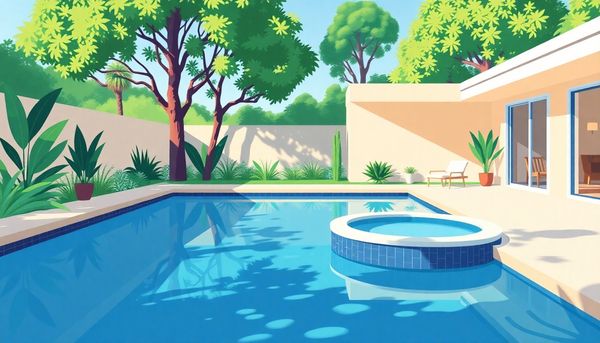
In the world of pool care, mishandling chemicals can create a ripple effect of problems, much worse than wearing mismatched socks in public. Let's talk about the art and science of using pool chemicals safely. One afternoon, a friend of mine, let’s call him Jake, learned this lesson the hard way. He poured pool shock directly onto his vinyl liner, resulting in a bleached, brittle patch that eventually leaked. The fix? Always pre-dissolve pool chemicals in a bucket of water before adding them to your pool. This simple step helps distribute the substance evenly, preventing any unwanted bleaching or damage to your pool's surfaces.
One golden rule in pool chemistry: never add water to chemicals. Instead, add chemicals to water. It sounds like a riddle, but it’s crucial to avoid splashback, which is like having a mini volcano erupt in your face. Trust me, you don’t want to experience that. Use warm water to dissolve chemicals faster, but keep in mind that this can release chlorine fumes. So, don’t forget your goggles, mask, and gloves—safety gear isn't just for superheroes.
Remember, when handled correctly, pool chemicals are allies in the battle against bacteria and algae. By avoiding chemical mishaps, you keep your pool safe and inviting, ready for that perfect summer afternoon swim.
When it comes to pool maintenance, handling chemicals safely is paramount—not just for the longevity of your pool, but for the safety of everyone taking a dip. Mismanaging chemicals can lead to anything from skin irritation to serious accidents, and trust me, neither outcome is a fun summer memory.
Start by reading the labels on all your pool chemicals meticulously. Each one comes with specific instructions that aren't just suggestions—they're crucial for proper use. A friend of mine once skipped the instructions on a new algae control product, thinking it was similar to what he'd used before. The result was a foamy mess that took days to clean up and left his pool out of commission.
Always store chemicals in a cool, dry place, away from direct sunlight and out of reach of children and pets. Mixing different chemicals can be dangerous, so use separate tools and containers for each type. And remember, even if you're in a rush, never pour chemicals directly into the pool. Using a bucket to mix them with water first can prevent damage to your pool surface and improve chemical distribution.
Don your safety gear—gloves, masks, and goggles—especially when dealing with potent substances like pool shock. Handling chemicals might seem like a mundane task, but prioritizing safety transforms this chore into a routine that protects both your pool and the people who enjoy it.
Streamlining your pool cleaning routine can transform a weekly chore into a manageable task, leaving you more time to enjoy a refreshing swim. Beginning with the essentials, ensure your pool has a reliable schedule. A consistent timetable for skimming, vacuuming, and brushing reduces the chances of grime buildup, making each cleaning session more efficient and less daunting.
Incorporate a personal touch to your routine. For instance, designate specific days for each task: skimming on Mondays and Thursdays, vacuuming on Wednesdays, and a thorough brushing on Saturdays. This not only breaks down the workload but also makes it easier to track maintenance. As someone who once dreaded weekly pool upkeep, I found that setting reminders on my phone kept me organized and even made the process oddly satisfying.
Diversifying your cleaning arsenal is another way to optimize your routine. While automatic pool cleaners are convenient, manual tools often catch those pesky spots machines overlook. A wide pool brush with a 360-degree reach can be a game changer, especially for targeting algae-prone areas. Don't forget to occasionally backwash your filter to prevent debris buildup and maintain optimal water flow. Keeping an eye on the pressure gauge will signal when it’s time for this task.
Lastly, involve your family or housemates. Assigning roles can transform a solitary task into a shared responsibility, and even a bonding experience. With a streamlined cleaning routine, you'll find yourself spending less time scrubbing and more time swimming.
When it comes to maintaining a sparkling and safe pool, mastering water testing techniques is crucial. Think of water testing as the health check-up your pool needs. Without it, you might find yourself dealing with mysterious skin irritations or a pool that looks more like a swamp than a sparkling oasis. It's not just about testing, though—it's about testing correctly.
Start with a reliable test kit, either liquid-based or test strips. Both have their pros and cons, but the key is consistency. Each kit should test for essential parameters like pH, chlorine, alkalinity, and calcium hardness. It's like ensuring your swimming space meets all the secret criteria for a blissful dip. Remember, the pH should remain between 7.2 and 7.6 for optimal swimmer comfort and equipment longevity.
Once a week, make it a habit to test your pool water, preferably at the same time of day. This consistency helps account for variables like sunlight and temperature, which can affect chemical levels. If you’re unsure about readings, don’t hesitate to take a sample to your local pool store for a more comprehensive analysis.
In the past, I skipped regular testing, and my pool water turned cloudy overnight. A quick investigation revealed the pH and chlorine levels were out of whack. Regular testing not only saved me from unscheduled scrubbing sessions but also protected my investment. So, grab your kit, put on your detective hat, and keep your pool in pristine condition with proper water testing techniques.
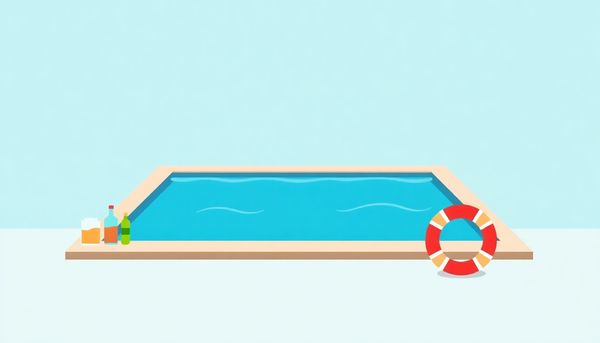
Mastering the art of pool-shocking might sound daunting, but with a few key insights, it becomes a manageable and even satisfying task. A common mistake many pool owners make is tossing chlorine shock directly into the pool, an action that can lead to unfortunate consequences, especially for those with vinyl liners. These shock granules, if not dissolved, can settle and bleach the liner, compromising its integrity and causing leaks over time.
To avoid this, always pre-dissolve the shock in a bucket of water. Start by filling the bucket with warm water—this not only helps the shock dissolve faster but also minimizes the potential for harmful splashbacks. Remember, always add the chemical to the water and not the other way around. This ensures a safer and more even distribution of the shock throughout your pool.
Safety is paramount in this process. Chlorine fumes are no joke, so equip yourself with protective eyewear, gloves, and a mask when preparing your shock solution. These precautions might seem cumbersome at first, but they’re small steps towards maintaining both your pool and your health.
Once dissolved, pour the solution evenly into the pool, ideally during the evening. The absence of sunlight prevents the chlorine from being burned off too quickly, allowing it to work effectively overnight. Shock your pool weekly for optimal results, using about one pound for every 10,000 gallons of water. With these techniques, you’ll maintain a sparkling-clear pool that’s a joy to swim in, free from the algae and bacteria that can spoil the fun.
Navigating the world of pool chemicals can feel like a delicate balancing act. Missteps in handling these substances often lead to more than just cloudy water—they can compromise the safety and longevity of your pool. I remember a friend who, in a rush, dumped shock granules straight into his vinyl-lined pool. What followed was a lesson in patience and precaution: the granules settled, bleaching spots on the liner, which eventually led to unsightly leaks.
To avoid such pitfalls, always pre-dissolve shock in a bucket of water before introducing it to your pool. This simple step ensures even distribution and shields your liner from the harmful effects of undiluted chemicals. The general rule of thumb is to add chemicals to water—not the other way around. By doing so, you minimize the risk of dangerous splashback.
Warm water can expedite the dissolution process, yet it may also produce chlorine steam. Don't skip safety gear—protective eyewear, masks, and resistant gloves are your best defense against these hazards. Remember, your pool is a delicate ecosystem, and each chemical addition should be approached with care and understanding. By respecting these guidelines, you not only protect your pool but also enhance its clarity and safety, ensuring it remains a haven for relaxation and fun.
Algae: the uninvited guest that loves to crash your pool party. Tackling an algae bloom once is frustrating enough, but preventing its return is where the real challenge lies. Start by maintaining a balanced water chemistry. Regularly test your pool water, aiming for chlorine levels between 1-3 ppm and a pH of 7.2-7.8. These parameters create an environment where algae spores struggle to thrive.
Every pool owner knows the importance of a good circulation system. Ensure your pump and filter run efficiently for at least eight hours daily, allowing all the water in your pool to be filtered. Stagnant water is a breeding ground for algae, so keep it moving!
Brushing might seem like a tedious chore, but it's crucial in disrupting algae's favorite nooks and crannies. Hit those hard-to-reach spots like ladders, corners, and behind lights at least once a week. Your pool brush is your best line of defense against stubborn algae.
Consider investing in an algaecide as an extra precaution. This isn't a substitute for good cleaning habits, but it provides an additional layer of protection. Choose a non-foaming variety to avoid turning your pool into a bubble bath.
Finally, don't underestimate the power of regular maintenance. Just like an old car, your pool benefits from routine check-ups. By staying ahead with these preventative measures, you'll keep your pool pristine and algae-free, ensuring your swim space remains a sanctuary, not a swamp.
In the realm of pool maintenance, brushing is the unsung hero that ensures your aquatic haven remains pristine. Many pool owners mistakenly assume that vacuuming alone will suffice, but brushing is what keeps the surfaces truly clean. Each corner and crevice in your pool can become a breeding ground for algae and dirt if neglected. This is where mastering the art of pool brushing becomes crucial.
Think of your pool brush as an artist's tool, meant to reach every nook and cranny. Begin with the walls, working your way systematically from top to bottom. Always use a brush that matches your pool’s surface material—nylon bristles for vinyl and fiberglass, stainless steel for concrete. A personal tip: start from the shallow end and move towards the deep end. This way, the debris naturally settles where your filtration system can easily capture it.
Remember, consistency is key. A weekly brushing routine is usually sufficient, but if your pool is surrounded by trees or prone to algae, consider brushing more frequently. From my own experience, setting aside a specific day each week helps in making it a habit. Not only does this improve the pool’s appearance, but it also enhances the effectiveness of chemicals, as the cleaner surfaces allow better absorption.
Embrace the process as part of your pool care ritual, and soon enough, you’ll notice a significant difference in the cleanliness and longevity of your pool.
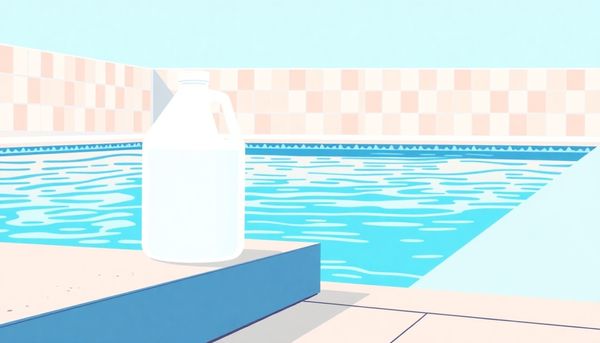
Battling pool algae can feel like an epic quest, but one vital weapon in your arsenal is a good old-fashioned pool brush. Algae thrive in those sneaky nooks and crannies—corners and steps where your robotic vacuum can't quite reach. A weekly brush-down keeps these microscopic invaders from gaining a foothold.
When I first got my pool, I thought the vacuum did all the heavy lifting. However, after a particularly stubborn algae bloom, I learned the hard way that brushing is crucial. Take a sturdy pool brush, preferably one with a wide head for better coverage, and tackle those hard-to-reach areas. Pay special attention to the waterline, steps, and ladders. These spots are prime real estate for algae colonies.
You might be tempted to skip brushing, especially if your pool appears clear. But trust me, this small effort goes a long way in preventing larger issues down the line. Regular brushing not only keeps algae at bay but also helps prevent the buildup of calcium and other minerals that can make your pool surfaces unsightly.
For pool owners with vinyl liners or delicate finishes, ensure your brush's bristles are suitable to avoid causing damage. Consistent brushing will maintain a pristine pool environment and save you the headache of dealing with persistent algae outbreaks. It's a simple routine that transforms pool maintenance from a chore to a habit, ensuring crystal-clear waters all season long.
Grabbing a pool brush might not seem like an art form, but mastering the technique can transform your pool from a mere backyard fixture into a sparkling oasis. When it comes to brushing, thoroughness is key. Pool walls, steps, and the often-overlooked waterline require regular attention to prevent algae buildup and mineral deposits.
Begin by selecting the right brush for your pool type. For plaster or concrete, a brush with stainless steel bristles is ideal, while nylon bristles work best for vinyl and fiberglass surfaces. Imagine you're coaching a sports team—each area of the pool requires a different play. Start from the top and work your way down, ensuring that debris flows towards the main drain for easy removal. Circular motions can reach into corners and curves, effectively dislodging stubborn grime.
Timing also matters. Early morning or late afternoon, when the sun isn't at its peak, can be the best periods for brushing. This prevents the chlorine from evaporating too quickly, allowing it to work more effectively against algae and bacteria. Some folks even find a rhythm in the routine, a meditative quality to the sweeping motions that turns pool maintenance into a moment of zen.
Ultimately, regular brushing, combined with consistent vacuuming and skimming, can keep your pool's water shimmering with health. If you ever find yourself tempted to skip this step, remember that a bit of elbow grease now can save heaps of effort later.
A backyard oasis, your pool is the place for laughter, relaxation, and perhaps a cannonball competition or two. Yet, all that fun can quickly turn into frustration if you mishandle pool chemicals, especially pool shock. This powerful substance, akin to a superhero for battling bacteria, needs careful handling. One of the most common mistakes? Dumping the undissolved shock directly into the pool.
My neighbor once learned this the hard way. The shock settled at the bottom, leaving the liner looking like a patchwork quilt—stark white spots standing out against the once uniform blue. To avoid such mishaps, it's crucial to pre-dissolve your pool shock. Simply fill a bucket halfway with water before adding the shock, stirring until fully dissolved. This ensures a more even distribution, sparing your pool from potential bleaching disasters.
Always prioritize safety when handling chemicals. A friend of mine once underestimated the fumes from dissolving shock and ended up with quite a coughing fit. Using warm water can speed up the dissolving process but also releases chlorine steam. Protective eyewear, a chemical mask, and gloves are your best companions here. By taking these steps, not only do you safeguard your pool liner and your health, but you also ensure your pool remains a pristine playground for all those summer adventures.
Ever tried taming a mischievous cat? Keeping pool water chemistry balanced can feel a bit like that, but mastering it ensures your pool remains a safe and inviting oasis rather than a breeding ground for bacteria. Each day brings new chemical challenges, whether it's the splash of a cannonball or a sudden rain shower, all influencing pH levels and alkalinity.
Friends who own pools often share their tales of woe: cloudy water, itchy eyes, or even the dreaded algae bloom. These are often symptoms of imbalanced water chemistry. Imagine a pool with excessively low pH. It might look inviting but can be as corrosive as vinegar, slowly eroding your pool’s infrastructure. Conversely, a high pH level can make your water cloudy and less effective at sanitization. Neither is ideal for an afternoon swim.
Regular testing is your first line of defense. Utilize test strips or liquid kits weekly, keeping an eye on the triumvirate of pH, alkalinity, and chlorine levels. Adjustments might involve adding a pH increaser or decreaser, and occasionally a splash of alkalinity booster. Fine-tuning these elements keeps the water inviting and protects the pool's components.
In our backyard pool, we've found that a consistent schedule works best. Every Sunday morning, coffee in hand, I find it both therapeutic and rewarding to ensure our water sparkles for the week ahead. By maintaining balanced water chemistry, you safeguard your investment and maximize enjoyment.
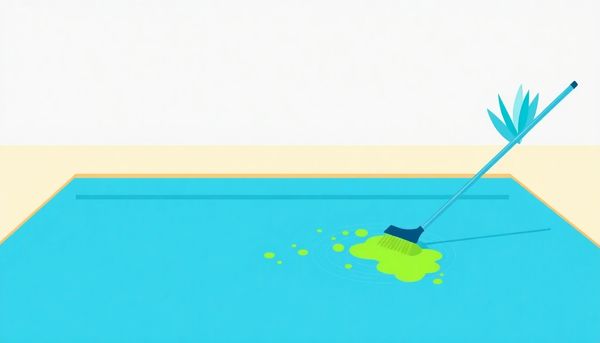
Maintaining your pool filter is akin to keeping the heart of your pool beating without a hitch. Just like in any well-oiled machine, neglecting this key component can lead to a ripple effect of problems, affecting water clarity and overall pool health. A friend of mine learned this the hard way when his once-crystal-clear pool slowly morphed into a murky mystery. Turns out, he hadn’t cleaned his filter in months, and the accumulated debris was choking its efficiency.
To avoid such a poolside saga, make sure to backwash your filter regularly. This process helps remove trapped dirt and debris, preventing pressure buildup. It’s essential to monitor the filter’s pressure gauge; a spike indicates it's time for a good clean. Moreover, if your filter uses sand or diatomaceous earth, consider replacing these materials periodically to maintain optimal performance.
But it’s not just about cleaning. Running your filter consistently is crucial too. Aim for at least eight hours a day, ensuring all pool water circulates through the filter. This routine not only keeps your water sparkling but also reduces the likelihood of algae and bacterial growth. Think of it as a daily workout for your pool—keeping things in top shape while you relax and enjoy the swim. After all, no one wants a pool that’s more swamp than sanctuary.
Understanding how to manage pool chemicals is akin to mastering a delicate recipe—one misstep, and the results can range from mildly inconvenient to downright disastrous. My friend once poured shock straight into her pool without diluting it first, and let's just say her vinyl liner didn’t appreciate the attention. The result was a bleached, brittle patch that soon demanded a costly repair.
To avoid such mishaps, always pre-dissolve shock in a bucket of water before adding it to the pool. This method ensures an even distribution and safeguards your pool's surfaces. Remember, the order matters: add chemicals to water, never water to chemicals. This simple step can prevent hazardous splashbacks that not only threaten your safety but also the structural integrity of your pool.
On one particularly humid summer day, I learned the hard way about using warm water to dissolve shock. It seemed efficient until a cloud of chlorine steam enveloped me. Now, I never prep shock without protective eyewear, gloves, and a mask. While the spectacle might be worthy of a superhero movie, the discomfort is quite real.
By taking these precautions, you not only protect your pool but also ensure a safe and enjoyable swimming experience. After all, the true joy of a pool lies in the carefree summer days it promises, not the unwanted chemistry lessons.
Efficient pool maintenance doesn’t just happen; it’s crafted through thoughtful routine and practice. In my early days of pool ownership, I found myself overwhelmed by the myriad tasks and timing involved. Yet, establishing a rhythm transformed the chaos into a streamlined process. The secret? A well-structured cleaning schedule.
First, equip yourself with the essentials: skimmers, vacuums, and brushes. Allocate specific days for these tasks, starting with skimming leaves and debris daily. My personal rule of thumb is a quick skim while enjoying a morning coffee; it’s both productive and peaceful. Weekly vacuuming is key, whether manual or automatic, ensuring thorough coverage, particularly in those hidden corners where grime loves to settle.
Brushing shouldn’t be an afterthought. Once a week, dedicate time to scrub walls and steps. This not only prevents algae formation but also keeps surfaces gleaming. I once overlooked this, thinking vacuuming sufficed, only to find stubborn green patches lurking in shaded areas. Trust me, the effort is worth it.
Harness technology to your advantage. Utilize apps or a simple calendar to remind you of tasks and track chemical levels. This approach transformed my maintenance from burdensome to manageable, freeing up weekends for actual swimming rather than scrambling with cleaning tools.
By optimizing your schedule and tools, you create a routine that’s less chore, more ritual. This method not only safeguards your pool but enhances the joy of ownership.
Water chemistry in pools often feels like a science project, but it's crucial for maintaining a safe and enjoyable swimming environment. Neglecting this aspect can lead to more than just cloudy water; it can cause skin irritation, equipment damage, and even make your pool a breeding ground for algae and bacteria.
Each week, grab your trusty test strips, or go the extra mile with a liquid test kit. Measure levels of pH, alkalinity, and free chlorine, as these are the cornerstones of a balanced pool. An imbalanced pH can make water either too acidic or too alkaline, both of which spell trouble. Acidic water is corrosive and can damage pool components, while alkaline water often feels unpleasantly slimy and can reduce chlorine's effectiveness.
During a particularly hot summer, I once skipped a few days of testing, thinking all was well. The water’s sparkle deceived me—algae began its stealthy invasion, turning my oasis into a murky mess. Lesson learned: consistency is key.
Adjusting water chemistry isn’t just about adding chemicals willy-nilly. It requires precision. Use pH increasers or decreasers and keep calcium hardness in check, especially if you have a concrete or plaster pool. A small tweak can prevent costly repairs and ensure you and your family enjoy crystal-clear waters all season long.
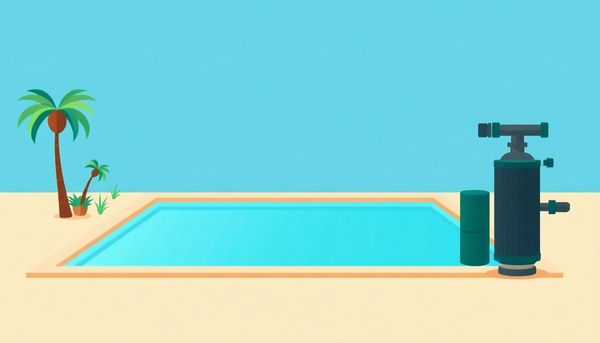
Owning a vinyl-lined pool can feel like juggling priceless china while riding a unicycle. One misstep, and the consequences could leave you scrambling for repairs. A vinyl liner's longevity depends heavily on how well you protect it from damage. While it may seem resilient, it's surprisingly vulnerable to everyday pool chemicals and maintenance habits.
Take chlorine shock, for instance. Tossing undissolved granules directly into your pool can create bleach spots on your liner, causing it to become brittle and prone to tearing. Picture a favorite shirt accidentally bleached—now imagine that on a pool-sized scale. To prevent this, always dissolve shock in a bucket of water before adding it to your pool, allowing for even dispersion that won't harm your liner.
Moreover, brushing your pool regularly is crucial, but using a brush with bristles too harsh for vinyl can lead to scratches or tears. Opt for a brush specifically designed for vinyl-lined pools to maintain cleanliness without risking damage.
Finally, maintaining balanced water chemistry is akin to keeping a fine-tuned orchestra. Imbalanced pH or calcium levels can weaken the liner's integrity, leading to costly repairs. Regular water testing and adjustments ensure your liner stays in peak condition.
Through careful handling and informed maintenance, your vinyl liner can transform your pool from a fragile treasure into a long-lasting oasis. By sidestepping these common pitfalls, you preserve not just your pool's aesthetic but also your peace of mind.
When mixing chemicals, even seasoned pool owners can run into trouble. One frequent blunder involves adding pool shock directly to the pool without pre-dissolving it, particularly if you're dealing with a vinyl liner. Those tiny granules can do more than sanitize—they might just bleach your liner, leaving it brittle and prone to leaks.
Before tossing shock into your pool, take a moment for a safer approach. Fill a bucket with water first, then gradually mix in the shock. This method not only prevents unsightly bleaching but also ensures an even distribution of chemicals, maximizing effectiveness.
Now, a word on chemistry etiquette: always add chemicals to water, not the other way around. It sounds basic, but getting this wrong can lead to splashbacks that are both hazardous and unpleasant. If you're aiming for a quicker dissolve, warm water helps, but be cautious. It can unleash chlorine steam, which isn’t exactly a spa treatment. So, gear up with protective eyewear, a mask, and gloves before concocting your chlorine cocktail.
Incorporating this simple step into your routine can save your pool liner—and your peace of mind. With the right approach, shocking becomes less a chore and more a strategic move in maintaining a pristine swimming environment.
A sparkling clear pool is like a jewel in your backyard, but achieving this requires more than just regular vacuuming. One crucial step often overlooked is brushing. Think of it as a spa treatment for your pool—a way to rid it of intrusive algae and stubborn debris nestled in corners that the vacuum simply can't reach.
Start by understanding your pool's anatomy. Corners, steps, and ladders are prime spots for grime buildup. These areas need your attention the most. Equip yourself with a wide pool brush designed to tackle every type of surface, from delicate vinyl to sturdy concrete. The right brush can make all the difference.
Incorporating brushing into your maintenance routine needn’t be a chore. Set aside a specific day each week—perhaps a Sunday morning when the world is still waking up—and get into the rhythm. You'll find the task therapeutic, much like a gentle morning stretch.
There was a time I thought my robotic vacuum was the be-all and end-all of pool care. But then, a persistent patch of algae taught me otherwise. A dedicated scrub with a pool brush not only revived my pool's luster but also reminded me of the value of personal touch in maintenance.
So let's raise our brushes to the unsung hero of pool care. With consistent brushing, your pool will remain pristine, inviting, and ready for those summer splashes.

This article provided insights into maintaining your pool. Start your pool care journey today!
Want to become a pool maintenance expert? Our free Pool School course covers everything you need to know about pool care. From basic maintenance to advanced troubleshooting, you'll learn how to:
Join over 10,000 pool owners who have already transformed their pool care routine. Get started with our free Pool School course today!